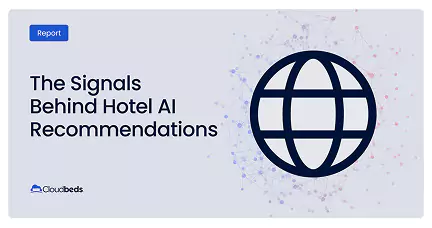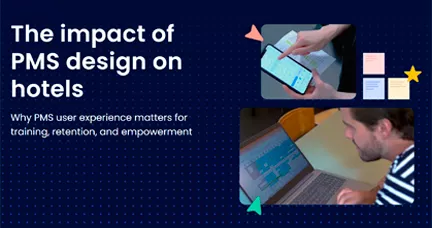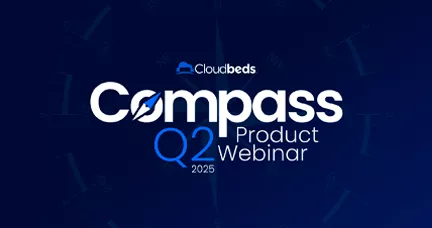Ever feel like you’re making decisions in the dark—adjusting rates, tweaking packages, hoping it’s enough to win guests? The truth is, your market is full of signals.
Competitive analysis helps you cut through the noise, spot what rivals are doing, and identify the gaps your hotel can own. Done right, it’s less about chasing competitors and more about positioning yourself to win on your terms.
What is a hotel competitive analysis?
A hotel competitive analysis is an assessment of your competitor’s strengths and weaknesses as a means of comparison to find your property’s strategic position in the market. Hoteliers use competitor analysis to help benchmark the local market to find their competitive advantage and ideal pricing position.
It’s basically like studying the chessboard in preparation for the game ahead. How do you know what move to make next? Gathering information on your competitors’ pricing can give you the insight to make smart revenue management decisions. Endgame: checkmate.
Why is performing a hotel competitive analysis important?
A hotel competitive analysis (sometimes called a value analysis) gives you the information you need to ensure your property has a competitive edge. It prevents you from leaving money on the table with rates that are too low or losing occupancy due to too high rates. If you’ve ever worked on strategic planning for business growth or a marketing strategy, you may have done a SWOT analysis or an evaluation of your business’s strengths, weaknesses, opportunities, and threats.
Similarly, in the hospitality industry, a hotel competitor analysis helps you find your “sweet spot” in your local market. The saying knowledge is power has never been more true when it comes to your competition; without this knowledge, you’re giving up your power to be in control of the best pricing strategy for your market.
How do you do a hotel competitive analysis?
Let’s start by discussing what is included in a hotel competition analysis. Two major factors impact hotel rates the most: what your competitors are doing and your current occupancy.
Large hotel chains, like Hilton and Marriott, have the budget to hire a revenue manager. Revenue management can be time-consuming and expensive, and it requires an understanding of data and strategic decision-making. However, it’s no longer true that revenue management is only for larger hotel businesses with a full hotel management staff.
Every property type and accommodation provider should conduct a hotel competitive analysis if they want to see better revenue per available room (RevPAR), a higher average daily rate and increase their profitability.
The 6 steps of a hotel competitive analysis
1. Choose your hotel competitive set, also known as a hotel compset. Select 3-5 direct competitors in your market (in our example, we use 4). For an accurate comparison, choose properties that attract a similar target audience and potential guests as your property.
2. List the competitive characteristics for comparison (in our example, we chose the 4 characteristics listed below and illustrated in the table), then on a scale of 1-10, rate where each property falls on the scale:
- Location
- Property amenities
- Room quality
- Reviews (number and star rating)
3. Take an average of those scores to calculate the “perceived value” of the property.
4. Next, take an inventory of your compset’s average room rates: Note down both the cheapest rate and the highest rate you found publicly listed for each property.
5. Plot the results on a graph (view image) On the “x-axis” add the RATE by listing the cheapest rate to the highest rate found for all the properties. On the “y-axis” add the VALUE which is the average score you calculated for each property in Step 3.
6. Review the results to build your compset strategy. The graph will help you understand your competitive position in the market. In other words, where you “stack up” against your competition in terms of price and perceived value.
For a truly comprehensive view of your hotel’s performance, you may also want to create secondary compsets. Secondary compsets allow you to get a big picture view by including hotels that are not necessarily in your “true competition” but are still influenced by the shifts in your market.
Choose a few luxury hotels of a higher price point with more offerings if you aspire to emulate them someday (for example, you have an impending renovation), or choose a compset of properties in a lower-tier, like budget hotels, so that you know how they are reacting to market changes to make well-rounded decisions for your property.
Make smarter pricing decisions with Cloudbeds
When it comes to yield, two primary factors matter most: your occupancy and your competitors’ rates. Cloudbeds Revenue Intelligence, powered by our proprietary causal AI engine, goes far beyond traditional rate shopping—combining real-time competitor pricing with forward-looking demand forecasts, market trends, and local event data to help you price with confidence and stay ahead of your compset.
Want to know when your competition raises or lowers rates? Cloudbeds Revenue Intelligence monitors your compset 24/7, sending instant alerts when they change pricing, availability, or restrictions. You can also track occupancy shifts at your own property and receive AI-driven recommendations on whether to raise, lower, or hold your rates based on accurate demand forecasts up to 90 days out.
The interactive dashboard gives you a centralized view of pace, pick-up, occupancy, and performance at a glance—alongside market data that explains why conditions are shifting. You decide whether to act manually or set parameters for automatic adjustments, ensuring you capture every opportunity to improve ADR and maximize revenue.
Where Cloudbeds Revenue Intelligence wins is in its ability to unify the critical questions revenue leaders need to answer daily:
- What’s going on at your property in terms of pricing and occupancy?
- What is your compset doing?
- How are you pacing, and should you move your rates?
Ready to maximize your revenue?
Published on 19 January, 2022 | Updated on 3 September, 2025



